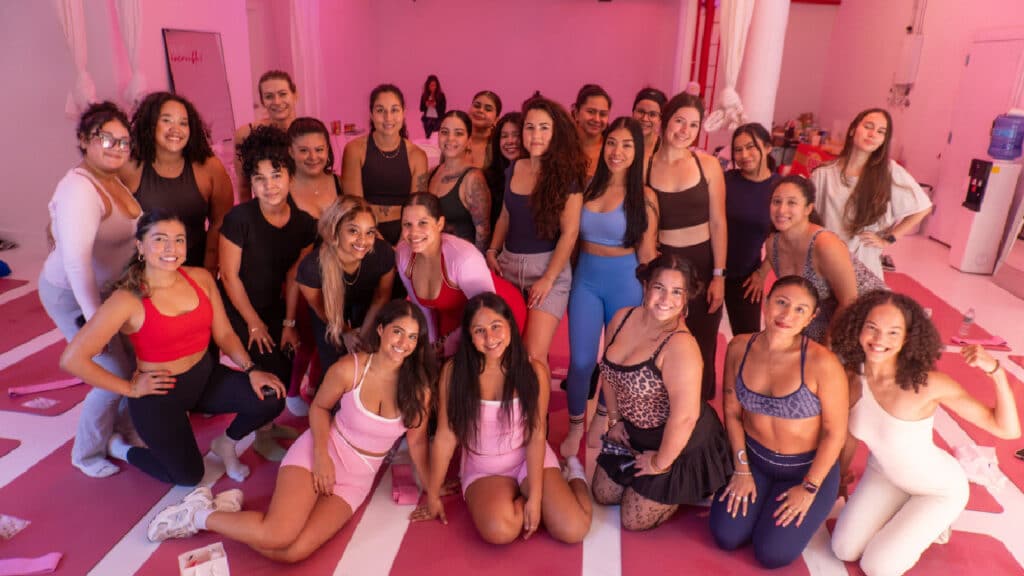Bacterial Vaginosis Affects Latinas the Most: Dr. Erica Montes Shares What We Need To Know
With everything Latinas have to juggle on a daily basis in our lives, it’s not uncommon for our vaginal and reproductive health to take a back seat—when we don’t forget about them altogether. It’s not until we notice something different or bothersome that we take action.
This happens, for example, with bacterial vaginosis (or BV). This is a vaginal infection with a high incidence among Latinas and African American women. Bacterial vaginosis occurs when the levels of natural bacteria in the vagina become imbalanced. Although our vagina has “good” bacteria in its flora, when the “bad” bacteria increase, it can cause discomfort and even pain.
Since our Latina community still perceives these topics as taboo, at FIERCE, we decided to talk to Dr. Erica Montes, a Latina OB/GYN and member of the American College of Obstetricians and Gynecologists, about everything we need to know about bacterial vaginosis.
The most common vaginal infection among women of reproductive age
For Dr. Montes, who has extensive experience in gynecology, women’s wellness, and counseling on vaginal health problems, bacterial vaginosis is a serious matter.
“Bacterial vaginosis, also known as BV, is the most common vaginal infection among women of reproductive age,” Dr. Montes said. “It affects about 21 million women and disproportionately affects Hispanic and Black women.”
This overgrowth of certain bacteria that alter the vaginal environment can happen at any time in life. However, women of reproductive age, especially women of color, are disproportionately affected.
How can we identify bacterial vaginosis?
According to Dr. Montes, some of the common symptoms of BV include a strong vaginal odor or increased discharge that may appear thin or milky. “The odor may be stronger or more noticeable after vaginal intercourse,” she added.
In her practice, Dr. Montes has found that many of her patients mistake the symptoms of BV for those of a yeast infection. She assures us that this is common, and there is no need to be embarrassed. “If you have BV, your discharge will appear thin or milky, and you may have a strong vaginal odor,” she said. “With a yeast infection, discharge tends to be thick and odorless, and you may experience vaginal itching.”
The main recommendation is for women who experience these symptoms to make an appointment with a healthcare professional. The important thing is to receive the appropriate treatment plan, such as XACIATO.
Is there anything Latinas can do to reduce their risk of developing bacterial vaginosis?
In general, treatment for bacterial vaginosis includes oral and topical medications. However, Dr. Montes says it is important to know that “two-thirds of BV cases will need medical attention.”
While we still need more research to determine preventive measures to reduce the risk of this infection in communities of color, some lifestyle factors may increase risk. They include having multiple or new partners and/or unprotected sex, cigarette smoking, and douching, which can disrupt the balance of healthy bacteria in the vagina, according to Dr. Montes.
Most important, however, is learning to talk about vaginal health
In the Latino community, especially in older generations, talking about sexuality or naming the vagina by name is almost impossible. However, this is one of the obstacles to access to health care among Latinas.
This became even more evident for Dr. Montes after having her third child. Despite all her experience in and out of healthcare facilities, she realized there weren’t many places on the Internet where women could find expert information about their health, much less in English and Spanish.
That’s why she decided to create “The Modern Mujer,” a blog that provides a bilingual online presence so Latinas “have a place to blossom into a woman who is more confident in her skin, knows what to expect from her body, and to transform gracefully over her lifetime.”
“I think Latinas like that I address ‘hush hush’ topics in my blogs, such as bacterial vaginosis (BV), urinary tract infections (UTIs), and menstrual bleeding,” Dr. Montes said.
“I encourage women to remember that as a Latina community, we want to be healthier, and having conversations about vaginal health is an important step,” she continued. “If it feels more comfortable, start the conversation with a friend first or try talking to a sister or cousin around the same age. As we raise the next generation of Latinas, it’s time we start talking about these ‘taboo’ topics early and often so women can recognize when to seek medical treatment. We can also raise a healthier, more open-minded generation.”
Finally, educating ourselves about our health is empowering
Dr. Montes is one of the few specialists opening safe spaces for Latinas to access critical information. For example, she tells us that she has noticed that her patients “feel more comfortable talking when they’re fully dressed before or after an examination.”
“Something I also do with my patients is talk about BV symptoms or other reproductive health issues so I can give them the space to say, ‘I have that’ or ‘That sounds like my symptoms.’ They may feel uncomfortable starting the conversation, and I find this helps to start an open dialogue.”
After all, the first step in accessing crucial information is getting rid of embarrassment
“It’s important for women to understand their bodies so they can feel empowered and recognize when something doesn’t feel normal to them,” Dr. Montes adds. “Education empowers women to have an informed and open dialogue with their healthcare provider and get a diagnosis and an individualized treatment plan in place.”
“Remember that as health care providers, we have seen it all, and there is no need to be embarrassed! You are not ‘dirty’ because you have BV or another vaginal infection,” she concludes. “If something doesn’t feel right or you are experiencing unusual-for-you vaginal changes, I recommend that you have an open and honest conversation with your health care provider.”
“For Latinas to have a healthy future, we need to break the cycle of being embarrassed or scared to talk about our vaginal health. Just because our grandmothers and mothers may feel this way doesn’t mean we need to as well!”




